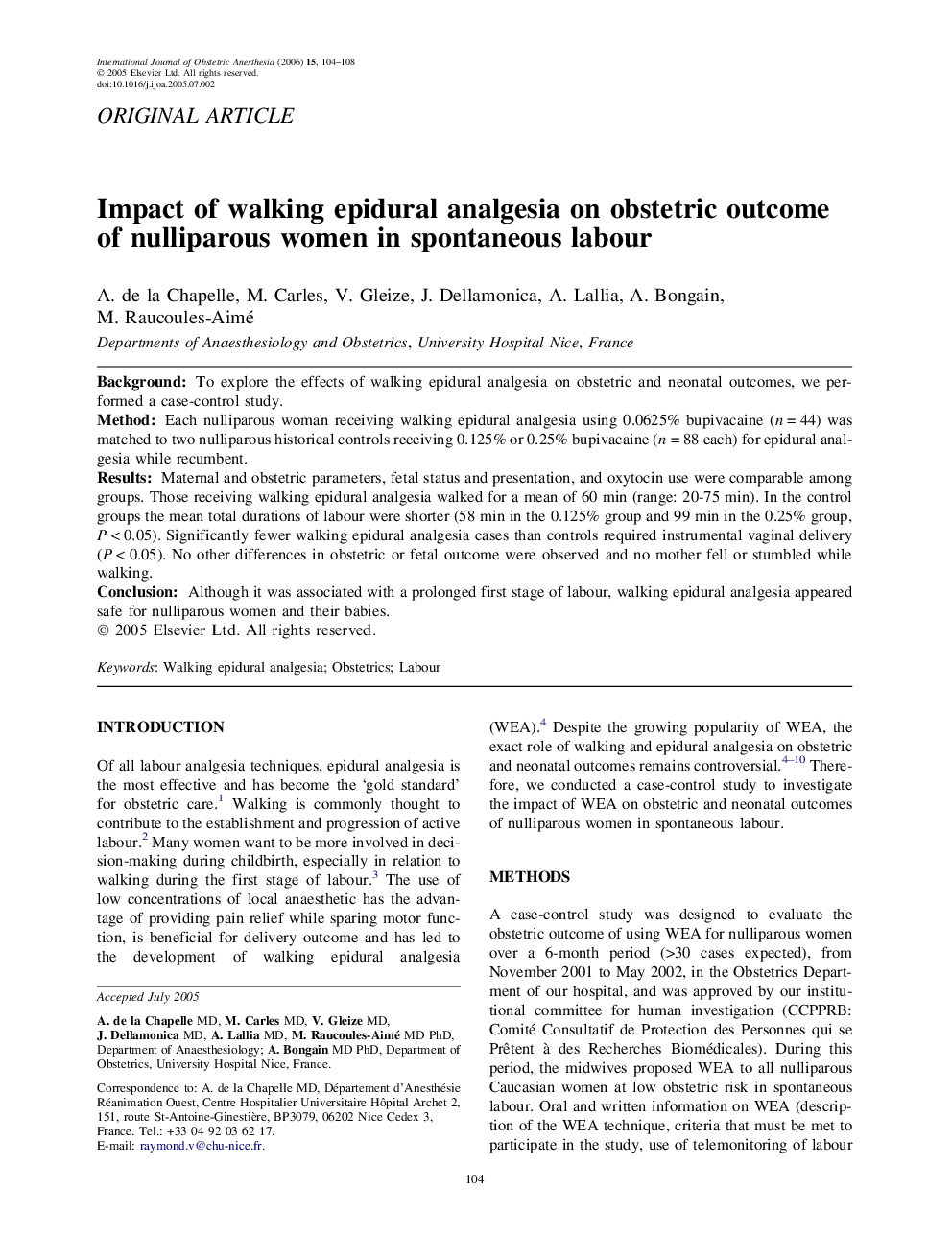| Article ID | Journal | Published Year | Pages | File Type |
|---|---|---|---|---|
| 2758660 | International Journal of Obstetric Anesthesia | 2006 | 5 Pages |
BackgroundTo explore the effects of walking epidural analgesia on obstetric and neonatal outcomes, we performed a case-control study.MethodEach nulliparous woman receiving walking epidural analgesia using 0.0625% bupivacaine (n = 44) was matched to two nulliparous historical controls receiving 0.125% or 0.25% bupivacaine (n = 88 each) for epidural analgesia while recumbent.ResultsMaternal and obstetric parameters, fetal status and presentation, and oxytocin use were comparable among groups. Those receiving walking epidural analgesia walked for a mean of 60 min (range: 20-75 min). In the control groups the mean total durations of labour were shorter (58 min in the 0.125% group and 99 min in the 0.25% group, P < 0.05). Significantly fewer walking epidural analgesia cases than controls required instrumental vaginal delivery (P < 0.05). No other differences in obstetric or fetal outcome were observed and no mother fell or stumbled while walking.ConclusionAlthough it was associated with a prolonged first stage of labour, walking epidural analgesia appeared safe for nulliparous women and their babies.
